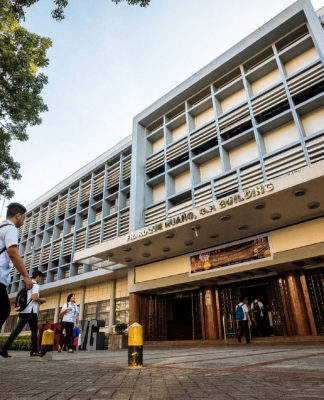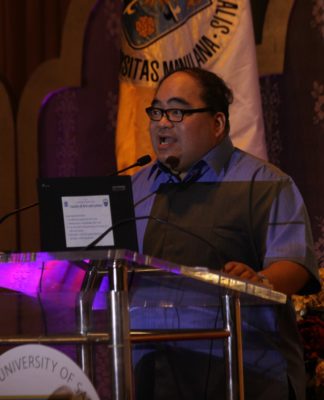UST is out of the top 200 universities in English and Literature this year, left behind by other Philippine universities with more established language programs.
Leading Philippine schools on this year’s list is Ateneo de Manila which ranked 24th. The University of the Philippines (UP) and De La Salle University (DLSU) trailed at 32th and 44th, respectively.
Last year, UST ranked 104th in the same category, after UP, Ateneo, and La Salle which placed 34th, 35th, and in the 51-100 bracket, respectively.
Faculty of Arts and Letters Dean Michael Anthony Vasco said UP, Ateneo, and La Salle have decades-old English programs and language centers, hence, their higher rankings. “They have been offering the degree AB English for decades. We just had our language centers two years ago,” Vasco said.
The University, he pointed out, did not get any request for data from QS, the London consultancy that comes out with annual university rankings.
“With due respect to the QS, I think we should also know how the data is being collected, because as far as we are concerned, we are the academic unit taking care of arts and humanities and philosophy and literature,” he told the Varsitarian.
The QS survey may have been perception-based, and data gathering could have relied on what’s available on the Internet, Vasco added. “The question is, how do they source the data? Do they simply get it from the general information known about the University? Do they simply get it from the website? What if the website is not updated? What information will you get there?” he asked.
Vasco also said it would be difficult to compete in other clusters of the Arts and Humanities category of the QS subject rankings, namely Philosophy, Modern Languages, Geography, History, and Linguistics.
“[We] do not offer the same breadth of programs being surveyed under the arts and humanities cluster in the QS survey,” Vasco said.
The growing number of participants in the QS survey has contributed to the general decline of Philippine schools in various QS rankings, the Artlets dean noted. “More and more international universities from highly industrialized countries are participating, like universities from Europe, North America, and even Asia-Pacific,” he said. “Chances are, Philippine schools will slide down to lower rankings.”
UST needs to catch up and intensify its academic programs, as well as make a name for itself in other disciplines, he said.
“They (QS) have linguistics in the survey, and they have included Geography, but we do not have degree programs in those areas. Until perhaps we are able to complete those disciplines, and we are able to create a name in all those disciplines, we will have to wait for a higher ranking,” Vasco said.
UST plummeted in this year’s QS Asian university rankings to 148th from last year’s 104th.
The criteria for the Asian rankings is broken down as follows: academic reputation (40 percent), citations per faculty (20 percent), faculty-student ratio (20 percent), employer reputation (10 percent), proportion of international students (5 percent), and proportion of international faculty (5 percent). N. L. G. Valenzuela
















